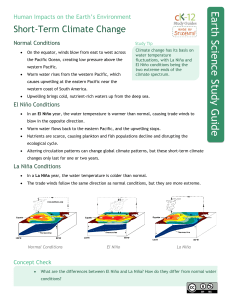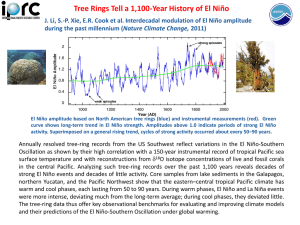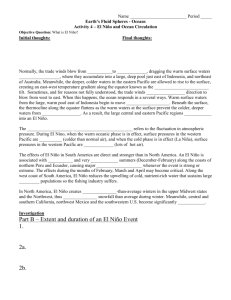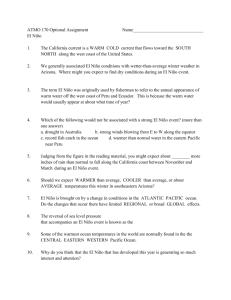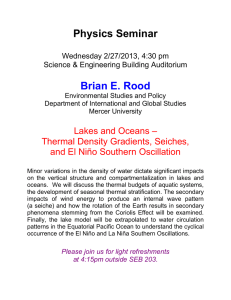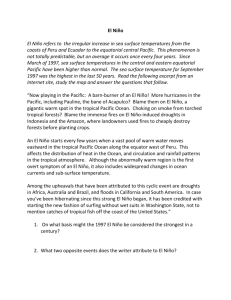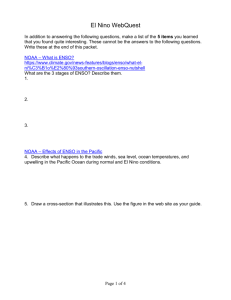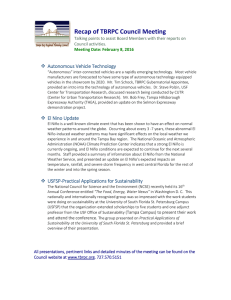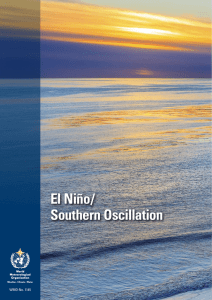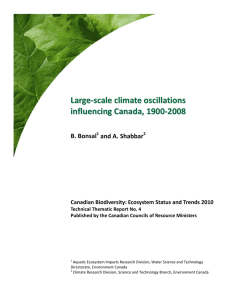A T URBULENT EVENT ! EL NiñO:
advertisement
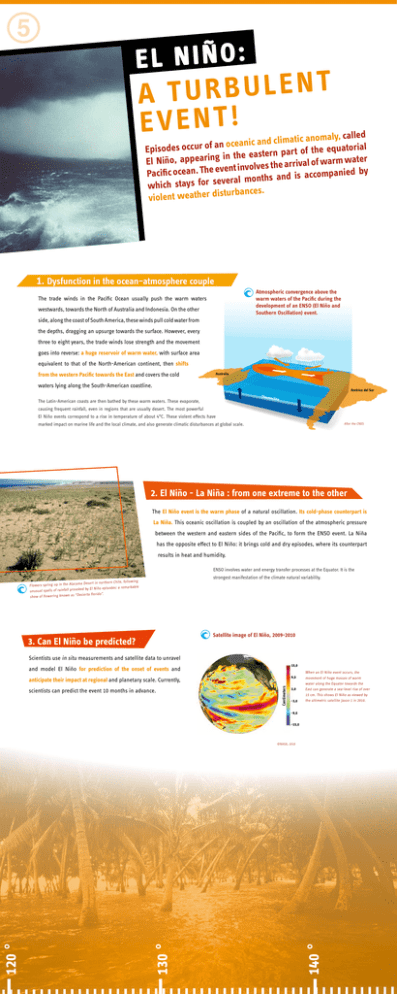
5 : o ñ i N El T N E L U B R U T A ! T N E EV ed ll a c , ly a m o n a ic t a clim d n a ic n a e c o n a f o l ia r o t a u q e Episodes occur e h t f o rt a p n r e t s a e e h t in r e t a w m r a w El Niño, appearing f o l a iv r ar e h t s e lv o v in t n e v e by d ie n a p m Pacific ocean. The o c c a is d an s h t n o m l a r e v e s r which stays fo . s e c n a b r u t is d r e violent weath 1. Dysfunction in the ocean–atmosphere couple Atmospheric convergence above the warm waters of the Pacific during the development of an ENSO (El Niño and Southern Oscillation) event. The trade winds in the Pacific Ocean usually push the warm waters westwards, towards the North of Australia and Indonesia. On the other side, along the coast of South America, these winds pull cold water from the depths, dragging an upsurge towards the surface. However, every three to eight years, the trade winds lose strength and the movement goes into reverse: a huge reservoir of warm water, with surface area equivalent to that of the North-American continent, then shifts from the western Pacific towards the East and covers the cold Australia waters lying along the South-American coastline. América del Sur Thermoc lina The Latin-American coasts are then bathed by these warm waters. These evaporate, causing frequent rainfall, even in regions that are usually desert. The most powerful El Niño events correspond to a rise in temperature of about 4°C. These violent effects have marked impact on marine life and the local climate, and also generate climatic disturbances at global scale. After the CNES 2. El Niño - La Niña : from one extreme to the other The El Niño event is the warm phase of a natural oscillation. Its cold-phase counterpart is La Niña. This oceanic oscillation is coupled by an oscillation of the atmospheric pressure between the western and eastern sides of the Pacific, to form the ENSO event. La Niña has the opposite effect to El Niño: it brings cold and dry episodes, where its counterpart results in heat and humidity. ENSO involves water and energy transfer processes at the Equator. It is the strongest manifestation of the climate natural variability. owing a Desert in northern Chile, foll Flowers spring up in the Atacam arkable ed by El Niño episodes: a rem unusual spells of rainfall provok sierto florido”. show of flowering known as “De Satellite image of El Niño, 2009-2010 3. Can El Niño be predicted? Scientists use in situ measurements and satellite data to unravel 15,0 and model El Niño for prediction of the onset of events and 9,0 scientists can predict the event 10 months in advance. Centimeters anticipate their impact at regional and planetary scale. Currently, 3,0 -3,0 When an El Niño event occurs, the movement of huge masses of warm water along the Equator towards the East can generate a sea-level rise of over 15 cm. This shows El Niño as viewed by the altimetric satellite Jason 1 in 2010. -9,0 -15,0 140 ° 130 ° 120 ° ©NASA, 2010

